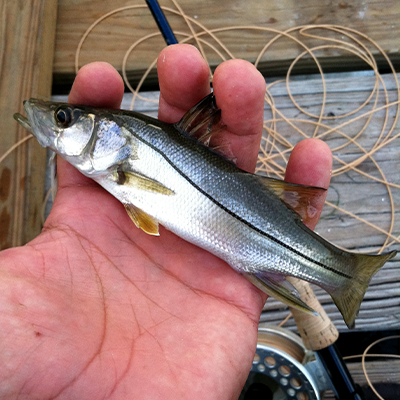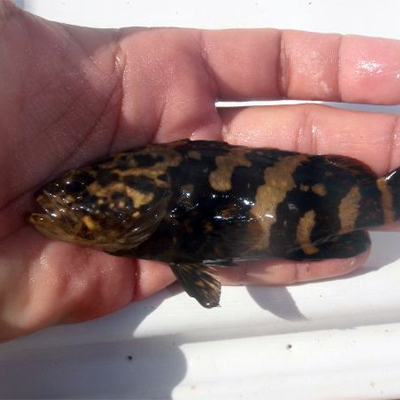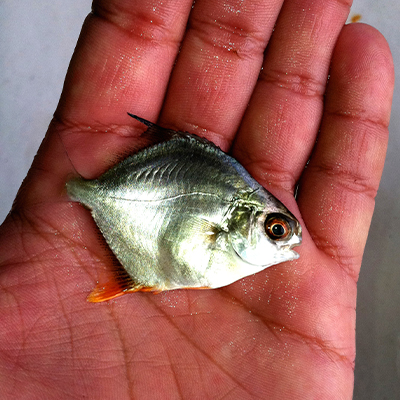Healthy Ecosystems for Healthy Fish Populations
Written by Dr. Zack Jud
Estuaries carry the lifeblood of our local fisheries, but their “big picture” importance is often ignored, even by folks who should care the most. Sure, people who fish in estuaries – like the Indian River Lagoon locally – appreciate all that these systems have to offer. But what about reef anglers, recreational divers, commercial shrimpers and stone crabbers? Why should they care about protecting estuarine habitats? It’s simple – the vast majority of the fish and shellfish we eat spend time living in estuaries, even though many of these species are eventually harvested somewhere else. Snapper and grouper. Colorful tropical reef fish. Baitfish and forage fish that keep our favorite gamefish fat and happy. Shrimp and crabs. All of these rely on “nursery habitats” in estuaries to get them through the first part of their lives.
Despite the clear link between estuary health and fishery health, single-species management – rules and regulations aimed at conserving a specific species and only that species – is the most common approach to protecting our fisheries. Scientists, recreational anglers, and commercial fishermen alike see this as a simple and straightforward strategy for managing the fish we value. Want to eventually bring home more dolphin? Temporarily reduce harvests. Want to catch bigger cobia? Increase the minimum size limit. Want to protect the Indian River Lagoon’s declining redfish population? Prohibit harvest altogether. Although single-species conservation measures for gamefish are a critical part of fisheries management here in Florida, if we don’t do a better job of managing for the overall health of our coastal ecosystems, no amount of species-specific protection will matter.
Ecosystem-based fisheries management – protecting entire ecosystems and all of their moving parts – can effectively protect and conserve multiple fish species at the same time. Closed seasons, size limits, and bag limits will be ineffective if we don’t work harder to conserve all of the various puzzle pieces that gamefish use throughout their lives. This includes protecting nursery habitats like seagrass beds, oyster reefs, and mangrove forests. It also means protecting non-gamefish members of the coastal food web, including forage fish and other data-limited, understudied, and underappreciated species. Simply put, without habitat and forage, we won’t have gamefish in our future. Unfortunately, as logical as this concept sounds, you’d be surprised at just how little emphasis has been placed on ecosystem-based fisheries management by the agencies tasked with protecting our fish stocks.
In recent years, fisheries managers have slowly started to recognize the importance of non-gamefish species, moving to protect fish for their value as part of a healthy food web, not just their value on the dinner plate. Efforts to regulate the harvest of forage fish like menhaden, as well as top predators like sharks and barracuda, are steps in the right direction towards ecosystem-based fisheries management. Despite these gradual paradigm shifts in species management, the habitat side of the equation is not receiving the attention it deserves. Moving forward, fisheries managers must include measures of habitat health as part of their decision-making process.
Sadly, coastal water bodies throughout Florida are being irreparably damaged by human activities. In our region, the Indian River Lagoon Estuary provides critical nursery habitat for many of the gamefish species we target, as well as the forage fish that fuel gamefish growth. After decades of abuse, this precious estuary is approaching an ecological tipping point. As we continue to pump untold volumes of freshwater, fertilizer, toxic chemicals, sewage, septic tank discharge, and muck into the estuary, we are consciously turning a blind eye to the slow but imminent demise of the system. The Indian River Lagoon is dying, and we just aren’t doing enough to save it! If immediate actions aren’t taken to improve water quality and protect habitats in the Indian River Lagoon, the world-class fishery supported by these fertile waters will be a distant memory.
This year has been kind to the Indian River Lagoon. In some areas, seagrasses are trying to stage a recovery and water clarity is improving. These positive signs have nothing to do with a regulatory change or a victory on the part of Florida’s passionate environmental activists. No – the improvements we are seeing in the Indian River Lagoon are almost entirely a result of the dry weather we’ve experienced this year. Less rainfall means less canal inflow and stormwater runoff. That translates to less nutrients making it into the estuary – nutrients that fuel fish-killing and seagrass-smothering algae blooms. Now is the time to remind yourself of just how beautiful and bountiful a healthier Indian River Lagoon is, because these conditions are short lived. We are one wet season away from completely resetting the estuary’s ecological clock. The life-sustaining seagrasses that reappeared this summer won’t stick around for long if meaningful legislative changes aren’t made to reduce nutrient inputs and freshwater inflows into coastal waters. Time and history are not on our side.
There is certainly a point of no return for damaged ecosystems. Unfortunately, we often don’t recognize that point until it has passed. Please don’t let Florida’s coastal ecosystems slip past the point of no return! Make your voice heard. Make your vote count. Let your actions show that you care about protecting these ecosystems and the fisheries they support so our children and grandchildren will be able to enjoy the same experiences we have. Fight for clean water, for the sake of our fish, our health, and our future.
Zack Jud, Ph.D., is the Director of Education at Florida Oceanographic Society. He can be reached at [email protected].



A tiny juvenile permit caught in an Indian River Lagoon seagrass bed. (Photo Credit: Dr. Zack Jud)
